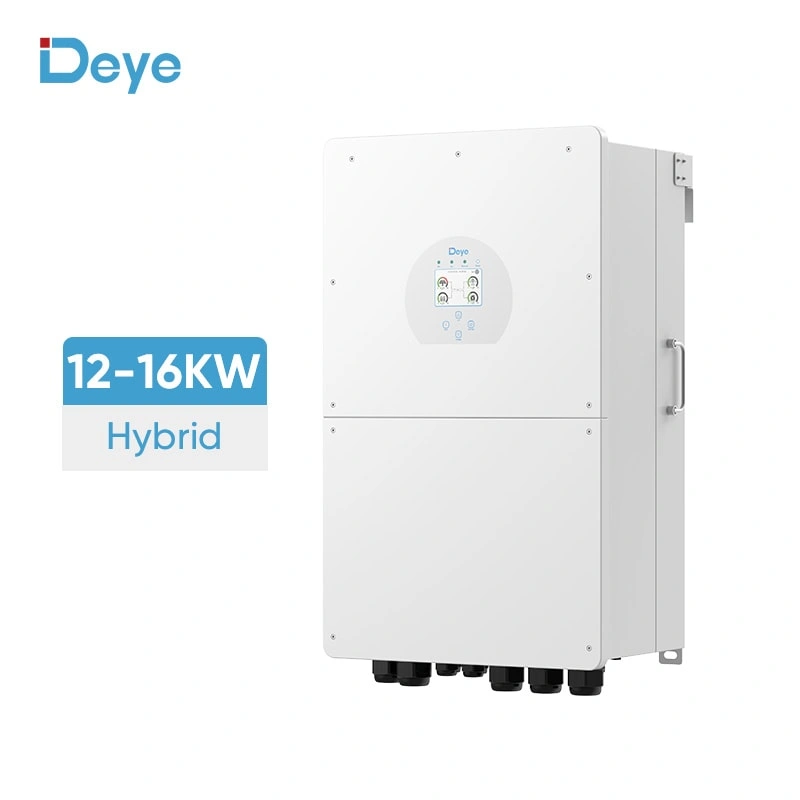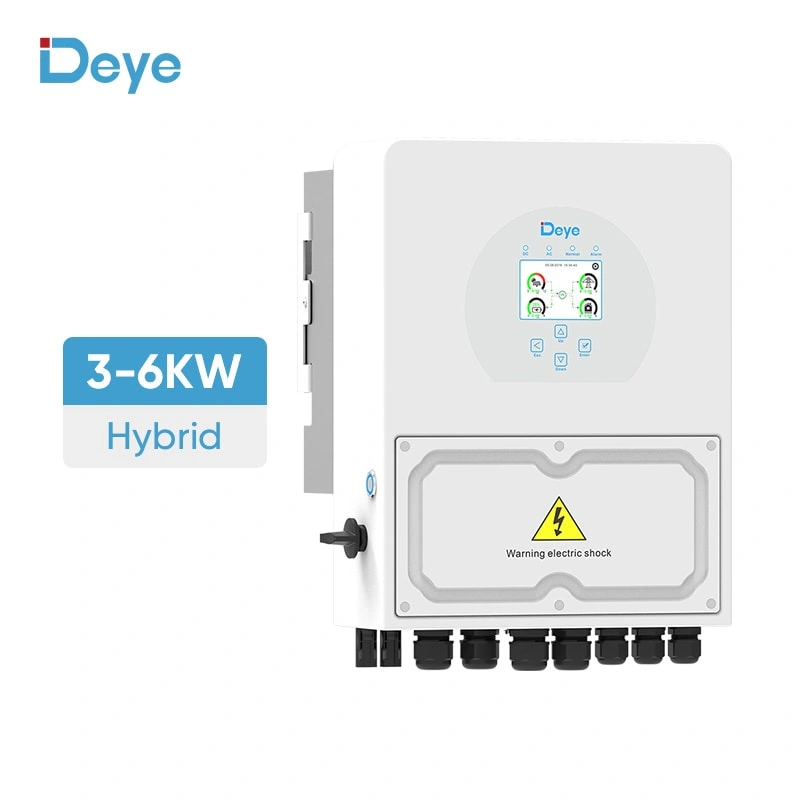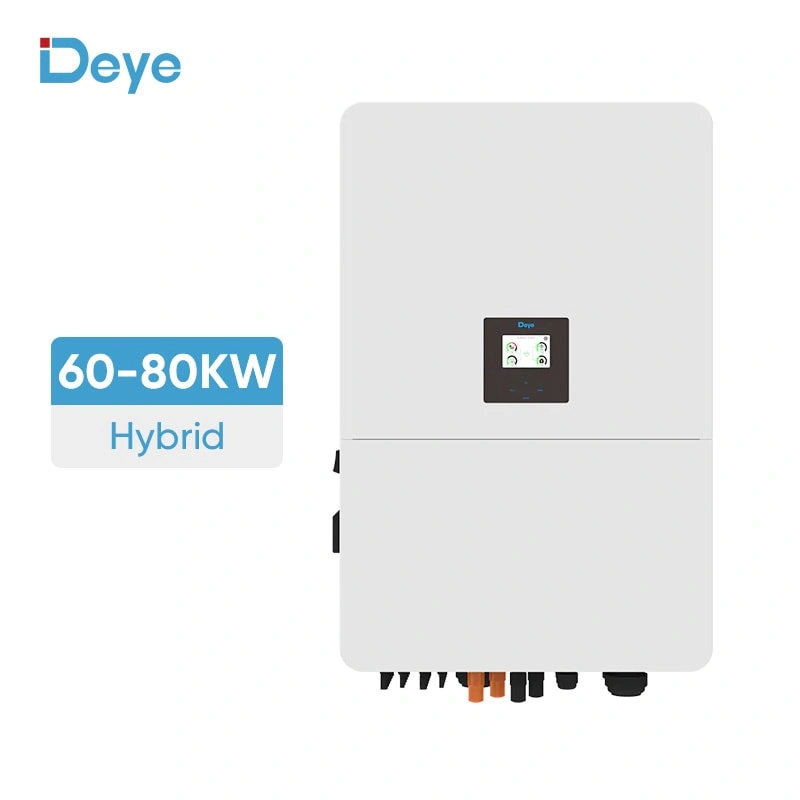| Model | SUN-29.9K-SG01HP3 | SUN-30K-SG01HP3 | SUN-40K-SG01HP3 | SUN-50K-SG01HP3 |
| -EU-BM3 | -EU-BM3 | -EU-BM4 | -EU-BM4 | |
| Battery Input Data | ||||
| Battery Type | Lithium-ion | |||
| Battery Voltage Range (V) | 160-800 | |||
| Max. Charging Current (A) | 50+50 | |||
| Max. Discharging Current (A) | 50+50 | |||
| Number of Battery Input | 2 | |||
| Charging Strategy for Li-Ion Battery | Self-adaption to BMS | |||
| PV String Input Data | ||||
| Max. DC Input Power (W) | 38870 | 39000 | 52000 | 65000 |
| Max. DC Input Voltage (V) | 1000 | |||
| Start-up Voltage (V) | 180 | |||
| MPPT Range (V) | 150-850 | |||
| Full Load DC Voltage Range (V) | 360-850 | 360-850 | 360-850 | 450-850 |
| Rated DC Input Voltage (V) | 600 | |||
| PV Input Current (A) | 36+36+36 | 36+36+36+36 | ||
| Max. PV I (A) | 55+55+55 | 55+55+55+55 | ||
| No.of MPP Trackers | 3 | 4 | ||
| No.of Strings per MPP Tracker | 2+2+2 | 2+2+2+2 | ||
| AC Output Data | ||||
| Rated AC Output Active Power (W) | 29900 | 30000 | 40000 | 50000 |
| Max AC Output Active Power (W) | 29900 | 33000 | 44000 | 55000 |
| AC Output Rated Current (A) | 45.4/43.4 | 45.5/43.5 | 60.7/58 | 75.8/72.5 |
| Max. AC Output Rated Current (A) | 45.4/43.4 | 50/47.8 | 66.7/63.8 | 83.4/79.7 |
| Max. Three-phase Unbalanced Output Current (A) | 60 | 60 | 70 | 83.3 |
| Max. Continuous AC Passthrough (A) | 200 | |||
| Peak Power (Off Grid) | 1.5 time of rated power, 10 S | |||
| Generator Input/Smart Load | 45.4 / 200 / 45.4 | 60.7 / 200 / 60.7 | 75.8 / 200 / 75.8 | |
| /AC Couple Current (A) | ||||
| Power Factor Adjustment Range | 0.8 leading to 0.8 lagging | |||
| Output Frequency and Voltage | 50/60Hz; 3L/N/PE 220/380, 230/400Vac | |||
| Grid Type | Three Phase | |||
| Total Harmonic Distortion (THD) | <3% (of nominal power) | |||
| DC Current Injection | <0.5% In | |||
| Efficiency | ||||
| Max. Efficiency | 97.60% | |||
| Euro Efficiency | 97.00% | |||
| MPPT Efficiency | 99.90% | |||
| Certififications and Standards | ||||
| Grid Regulation | VDE4105, IEC61727/62116, VDE0126, AS4777.2, CEI 0 21, EN50549-1, | |||
| G98, G99, C10-11, UNE217002, NBR16149/NBR16150 | ||||
| Safety EMC / Standard | IEC/EN 61000-6-1/2/3/4, IEC/EN 62109-1, IEC/EN 62109-2 | |||
| General Data | ||||
| Operating Temperature Range (℃) | -40-60℃, >45℃ Derating | |||
| Cooling | Smart Cooling | |||
| Noise (dB) | ≤65 dB | |||
| Communication with BMS | RS485; CAN | |||
| Weight (kg) | 80 | |||
| Cabinet Size (WxHxD mm) | 527×894×294 (Excluding Connectors and Brackets) | |||
| Protection Degree | IP65 | |||
| Installation Style | Wall-mounted | |||
| Warranty | 5 Years (10 Years Optional) | |||
Deye 30–50kW Hybrid Three Phase Inverter for Large-Scale Solar System
Product Features
Deye 30–50kW Hybrid Three Phase Inverter for Large-Scale Solar System
Product Features
100% unbalanced output per phase
AC coupling for solar system retrofits
Supports 10 inverters in parallel
Dual battery input, max 100A charge/discharge
High-voltage battery for better efficiency
6 charge/discharge time settings
-
Q :
1. What type of projects is this inverter suitable for?
A :
This inverter is ideal for large-scale residential, commercial, and industrial hybrid systems requiring high power and flexibility.
-
Q :
2. Does it support high-voltage battery banks?
A :
Yes, it works with lithium-ion batteries in the 160–800V range, allowing efficient operation and extended cable runs.
-
Q :
3. Can I expand my system with more inverters or batteries?
A :
Absolutely. Up to 10 inverters can be paralleled, and multiple batteries can be connected via its dual input ports.
-
Q :
4. Is this inverter compatible with diesel generator backup?
A :
Yes, the unit supports diesel generator energy input, making it suitable for off-grid or backup energy applications.
-
Q :
5. How does the MPPT configuration benefit large PV arrays?
A :
With 3 or 4 MPPTs depending on the model, it optimizes power tracking across multiple orientations or string configurations.
-
Q :
6. What protections are included for safety and compliance?
A :
It includes surge protection (Type II), insulation monitoring, arc fault detection, and full compliance with global grid codes.
-
Q :
7. How big a solar system do I need for 450 kWh per month?
A :
To offset approximately 450 kWh of monthly electricity consumption (roughly 15 kWh per day), you will need a solar system ranging from 4.5 kW to 6.5 kW, depending on site conditions (sunlight intensity, losses, shading) and the business's load requirements.
Detailed Specifications and Design Considerations
1. Convert monthly consumption to a daily target
450 kWh ÷ 30 = 15 kWh/day
Add performance buffer (10–25%) to account for efficiency losses, seasonal variations, and redundancy → Target set at ~16.5 to 18.8 kWh/day
2. Determine Site Peak Sunlight Duration
Peak sunlight hours = Average daily full-sun equivalent duration
Approx. 3.5–4.5 hours/day for most Northeast U.S. regions
3. Apply derating factors (losses)
Actual system losses include: inverter efficiency losses, line losses, dust accumulation, shading effects, temperature impacts, and module mismatch
Typical derating factor = 0.75 to 0.85 (i.e., 15–25% loss)4. Calculate required DC system capacity
Formula:
> Required DC Power (kW) = Daily Target Electricity Consumption (kWh) ÷ Peak Daily Sunlight Hours ÷ Derating Factor
Assuming 17 kWh/day, 4.0 sunlight hours, derating factor 0.80:
17 ÷ 4.0 ÷ 0.80 = 5.3125 kW DC5. Convert DC Capacity to Panel Quantity, Area, and Layout
Using 400-watt panels: 5.3125 ÷ 0.4 = ~13.3 → ~14 panels
Panel area: Typical 60-cell (residential) panel approx. 17–18 sq ft (1.7 sq m) ([Solartap][1])
14 panels × ~1.7 m² = ~23.8 m² (or ~255 sq ft)
Account for setbacks, spacing, shading, access paths, tilt angle, and orientation6. Commercial/Enterprise Adjustments and Considerations
a. Peak Demand, Load Curves, and Demand Charges
Even low electricity consumption (kWh) may involve high instantaneous demand (kW), driving up billing costs
System design should focus on reducing demand charges, not just offsetting energy consumptionb. Scalability and Margin Planning
Allow 10-25% buffer capacity for future load growth (e.g., new equipment, EV chargers)
Reserve rooftop or ground space for future expansionc. Inverter Selection and DC/AC Power Ratio
In most commercial projects, DC power can be appropriately scaled up (e.g., 1.1x or 1.2x) within manufacturer limits
Over-sizing helps mitigate low-irradiance periodsd. Energy Storage/Hybrid/Backup Systems
For load shifting or backup power objectives, battery capacity design must be considered; PV array size has limited impact but directly determines battery and inverter costs
Establish system models based on battery load curves to optimize configurationse. Seasonal Performance and Winter Margin
Winter generation may drop 30-50% below average levels.
Design must meet annual energy goals, not just summer generation targets.f. Regulatory Policies, Grid Connection Standards, and Net Energy Output Rules
Understand local net metering policies, feed-in tariff subsidies, and output restrictions.
Some regions impose output caps; over-sizing may prove counterproductive.Related Products
-

Deye 12/14/16kW Single Phase Hybrid Inverter with Triple MPPT
Learn More -

Deye 3/3.6/5/6kW Single Phase Hybrid Inverter with Dual MPPT
Learn More -

60-80kw Deye Hybrid High-Efficiency Inverter for Solar+Storage Systems
Learn More -

Deye Hybrid Inverter Single Phase 16kw Low Voltage Stock for Home Use
Learn More
-




